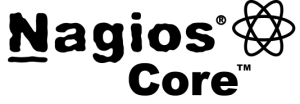- About
- What is Nagios Core?
- System requirements
- Licensing
- Downloading the latest version
- System requirements
- Release Notes
- What's new in this version
- Known issues
- Known issues
- Support
- Nagios Library - Nagios tips, tutorials, documentation, and manuals
- Support Forum - Community and customer Nagios support forum
- More Options - Commercial support options
- Support Forum - Community and customer Nagios support forum
- Getting Started
- Advice for beginners
- Quickstart installation guide
- Upgrading from previous versions
- How to monitor a Windows machine
- How to monitor a Linux/Unix machine
- How to monitor a Netware server
- How to monitor a network printer
- How to monitor a router/switch
- How to monitor a publicly available service (HTTP, FTP, SSH, etc.)
- Quickstart installation guide
- Configuring Nagios
- Configuration overview
- Main configuration file options
- Object configuration overview
- Object definitions
- CGI configuration file options
- Configuring authorization for the CGIs
- Main configuration file options
- Running Nagios
- Verifying your configuration
- Starting and stopping Nagios
- Starting and stopping Nagios
- The Basics
- Plugins
- Macros and how they work
- Standard macros available in Nagios
- Host checks
- Service checks
- Active checks
- Passive checks
- State types
- Time periods
- Determining status and reachability of network hosts
- Notifications
- Information on the CGIs
- Macros and how they work
- Advanced Topics
- External commands
- Event handlers
- Volatile services
- Service and host result freshness checks
- Distributed monitoring
- Redundant and failover monitoring
- Detection and handling of state flapping
- Notification escalations
- On-call notification rotations
- Monitoring service and host clusters
- Host and service dependencies
- State stalking
- Performance data
- Scheduled host and service downtime
- Using the embedded Perl interpreter
- Adaptive monitoring
- Predictive dependency checks
- Cached checks
- Passive host state translation
- Check scheduling
- Custom CGI headers and footers
- Object inheritance
- Time-saving tips for object definitions
- Event handlers
- Security and Performance Tuning
- Security considerations
- Enhanced CGI security and authentication
- Tuning Nagios for maximum performance
- Fast startup options
- Large installation tweaks
- Using the nagiostats utility
- Graphing Nagios performance statistics
- Enhanced CGI security and authentication
- Integration With Other Software
- Integration Overview
- SNMP Traps
- TCP Wrappers
- SNMP Traps
- Nagios Addons
- NRPE
- NSCA
- NDOUtils
- Other addons
- Nagios Exchange
- NSCA
- Development
- Plugin API
- Developing Plugins For Use With Embedded Perl
- Developing Plugins For Use With Embedded Perl






